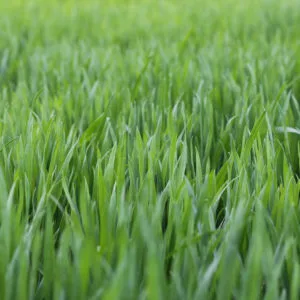Feeding your lawn in fall gives it the nutrients it needs for year-round good health. Autumn’s cooler air combined with soil that’s still warm enough to germinate seeds creates the ideal environment for fertilizing. And, after a long summer of heat, drought, pests, weeds, and foot traffic, your lawn could use a little extra love. The nutrients in fertilizer also get it ready for the winter ahead. Follow these fall lawn fertilizing tips to give your grass a leg up on spring growth.
Be in the Know
For successful fall lawn fertilizing, there’s some things you need to know. First, is your turf type cool-season grass or warm-season grass? Cool-season grasses like fescue, ryegrass, and Kentucky Bluegrass, which usually grow in the northern states, require a different amount of nitrogen than warm-season grasses, which often grown in the southern states.
Next, you need to know your soil type. If the soil pH is too high or too low it can’t effectively absorb nutrients. Average pH is approximately 6.5. Lower numbers mean higher acidity. Get a soil testing kit from your local garden center so you choose a fertilizer formula that benefits the soil type.
Timing Is Everything
Fall is prime time to feed cool-season grasses. Apply fertilizer in October or November, before the grass loses its rich color. Time your fall lawn fertilizing for after you aerate your lawn. The holes in the soil let the nutrients reach the root systems easier. Also, give your grass a good watering a couple days before applying fertilizer. A light watering after fertilizing washes the product off of grass blades and into soil.
Get the Right Stuff
Natural nutrients in the soil differ from one location to another. The soil testing kit tells you what nutrients your turf is lacking. Always consult the fertilizer label. Each label contains a three number ratio representing the proportion of nitrogen, phosphorus, and potassium the formula contains. Choose the formula that fits your test results.
Another choice to make is between a quick release and slow release fertilizer. Quick release fertilizer is great for a fast green up, while slow release provides longer lasting results.
Distribution
You need a distribution method to spread fertilizer. A broadcast spreader disperses seed in a wide arc and covers larger areas best. Handheld models are ideal for smaller areas because they are more accurate. Push models are most effective when covering more open areas, but require a steady walking pace to ensure an even distribution.
Alternatively, drop spreaders work well for smaller areas that require more precise coverage. This type of spreader drops fertilizer beneath it, providing a more accurate application. The bottom line is that a broadcast spreader is faster and better for larger areas, while a drop spreader better targets smaller or odd-shaped areas.
Let Us Be Your Fall Lawn Fertilizing Experts
Fertilizers must be applied correctly and treated with care. Always follow directions on the package carefully. Too much fertilizer can do more harm than help. Call in an expert to ensure fall lawn fertilizing is done right. Contact Free Spray Lawn Care at 419-529-5296 today.



Comments (0)
Thanks for your comment!
Thanks for your feedback! Your comments have been successfully submitted! Please note, all comments require admin approval prior to display.
Error submitting comment!
There is a problem with your comment, please see below and try again.